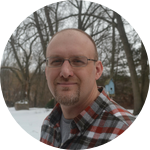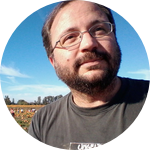About This Project
We propose to build an inexpensive, open source, portable radio measurement system that can characterize high-value fruit and tree nut crops. While radiometry has been applied to questions of fruit and tree nut quality, to our knowledge, it has not been widely used to measure plant health in situ. Previous research suggests that radio imaging can be used to detect anomalies in plant tissue that are otherwise not visible, and can be used to nondestructively measure plant biomass.
Ask the Scientists
Join The DiscussionWhat is the context of this research?
Non-invasive technologies to measure plant physiology and development can provide valuable new sources of data for horticultural, and agronomic research. If low-cost tools can be deployed in the field, researchers can gain a better understanding of questions in situ, rather than in artificial settings.
Traditional imaging, whether RGB, multispectral, or hyperspectral, has been successfully used to support research in the above areas, but there has been comparatively limited use of tools that can observe interior structures and processes akin to the way computed tomography and other radio imaging techniques have been used in human medicine.
What is the significance of this project?
Low-cost radiometric measurement tools can provide an important new source for data in plant biology, forestry, and agricultural research. This could help improve understanding of how practices in pruning, irrigation, nutrient management, and pest management affect the unseen interior structure of trees and vines. In turn, this understanding can lead to new, site-specific recommendations for horticultural and viticultural practices that can enhance the sustainability of crop production, especially in light of climate change and associated ecosystem disruption.
What are the goals of the project?
We intend to test our proposed imaging system by measuring plant biomass during the growing season, focusing initially on vineyards and orchards in Oregon and California.
We will compare measurements of healthy trees and vines with those that are known to be infected with trunk diseases, or nutrient/water deficiency issues.
To provide additional information about the usefulness of our approach, we will compare the performance of our system with plant health measurements made by other methods, such as tissue and soil sampling, sap flow measurements, and visual inspection.
Budget
The initial tests will use the open source LibreVNA Network Analyzer and off-the-shelf radio antennas so we can quickly get into the field and make observations. The cost of these parts is $3,395. In the long run, we will explore building accessory components to complement the LibreVNA, or depending on costs, may develop our own purpose-built radio hardware. We have allocated 70 hours of time for one of our team members to develop signal processing methods to interpret the data we collect in the field. Crowdsourced funds raised in excess of the budget will be used to support hardware and mechanical work (such as mounting hardware for different tractor/implement combinations), as well as additional days of field observations with collaborators at Oregon State University and the University of California.
We will pay the platform and payments fees out of pocket, so the budget items shown above are the actual amounts that will be spent on the project.
Endorsed by
 Project Timeline
Project Timeline
Time permitting, and if there are still fruit on the vines, field data collection will take place in Fall 2023 in Oregon's Willamette Valley and in Sonoma/Mendocino counties in California. Post-processing of the data will take place concurrently, but is expected to continue through December 2023. Software code and data will be made publicly available for research and peer review. UPDATE: Please see our revised timeline below, and take a look at our January 2024 update for more information.
Aug 31, 2023
Project Launched
Feb 14, 2024
Build radio imagers
Feb 21, 2024
Test radio imager in lab
Mar 08, 2024
Test measurements in vineyards and orchards in California
Apr 06, 2024
Begin weekly vineyard measurements in Oregon
Meet the Team
Kyle Birchard
I have worked for 23 years in agriculture, beginning in the marketing and logistics, and have been moving closer to the plant and soil side ever since. While I have always been working with agricultural technology, I took a deliberate turn toward open hardware and software around 2016, looking to build tools to help collect data that were previously unavailable. In 2019, my small company was awarded funding from the National Science Foundation to develop a lidar-based system for flying insect detection. Ever since then, I have been working to develop new technologies to extend our understanding of agricultural systems, and am working toward where I can make meaningful contributions to the practice of open hardware, data, and science.
Additional Information
Our team conducted initial radio frequency measurements of plant biomass in October 2019. The intention was to determine whether commercial off-the-shelf components were possible. The results confirmed that difference in biomass structure and mass were indeed measurable, and the complexity of the signal appeared to increase with the physical complexity of the biomass. This is consistent with findings in our literature review. Please ask for references if interested.
Project Backers
- 2Backers
- 100%Funded
- $10,005Total Donations
- $5,002.50Average Donation

